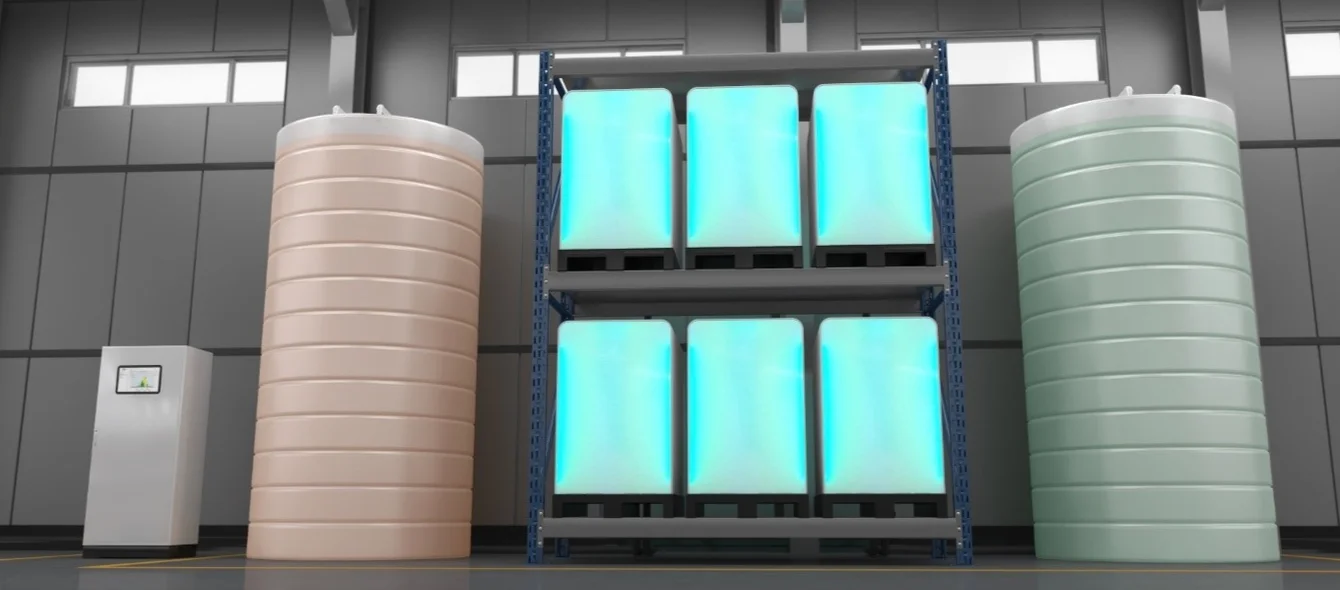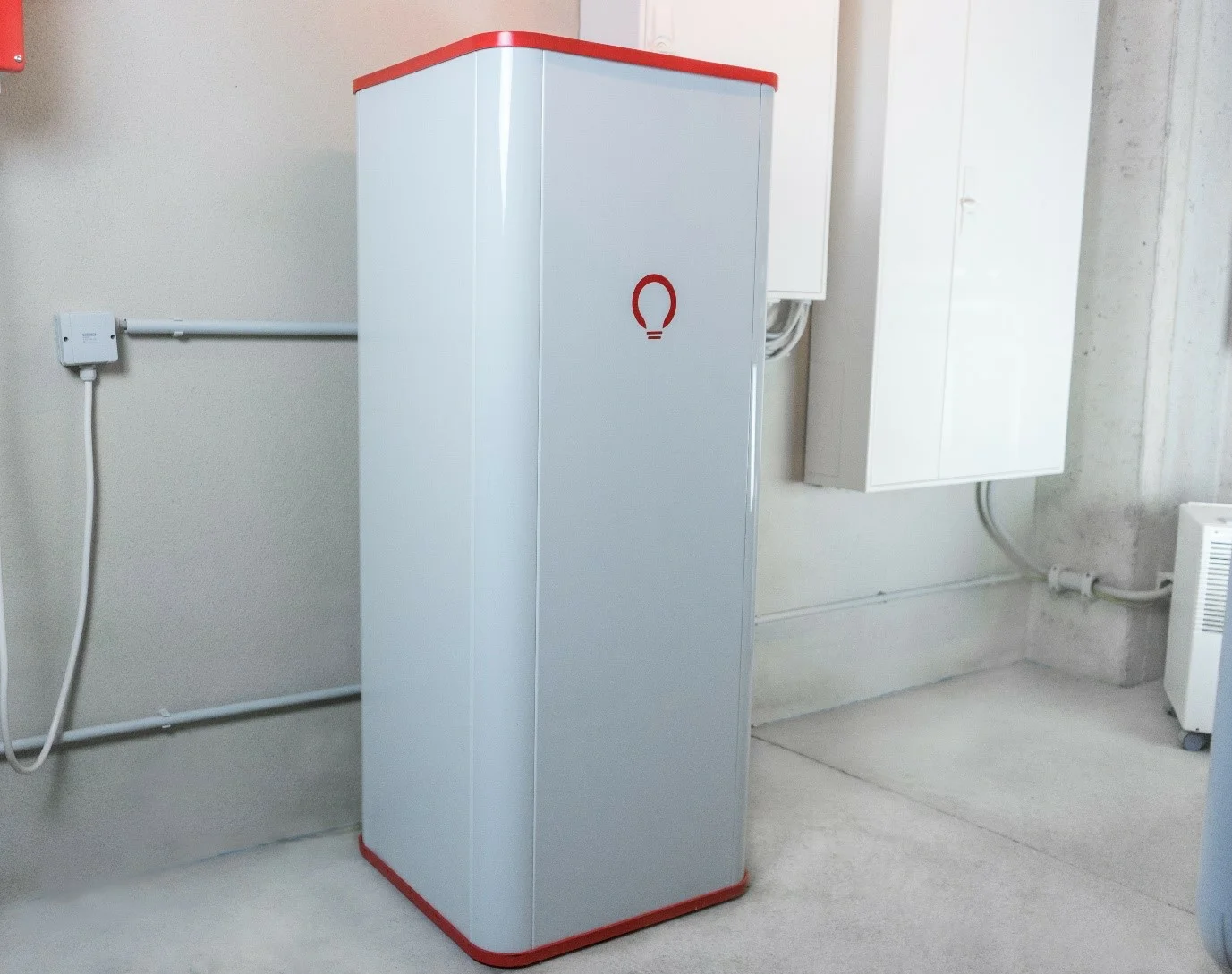Nowadays, virtually everything is organic: milk and cotton wool are the natural picks, but cosmetics and even lifestyles now also fall into that category. After all, the ‘organic’ label designates sustainable products that are cultivated biodynamically. When it comes to food, the term is just as tautological as ‘biological’ is, since food grown by conventional means by definition can only be organic or biological.
The perspective shifts somewhat as far as batteries are concerned, however. In this context, ‘organic’ designates a chemical compound containing carbon, which is out of the ordinary in energy storage units. This is why the term ‘organic flow battery’ fits two-fold: These chemical energy storage units are based on carbon compounds and can consist largely of renewable resources. What follows is a step-by-step explanation.
Redox flow: decoupling performance from capacity
All flow batteries work based on the same basic principle: Two containers, each filled with a different electrolyte, are connected to each other via one or several devices also known as stacks. The stacks use electric current to exchange ions between the two electrolytes. One side is chemically REDuced while the other one is OXidised. This REDOX reaction transforms electrical energy into chemical energy, thereby charging the battery. Running this reaction in reverse causes the ions to flow back, generating electric current.
Visualization of lignin-based energy storage systems for more sustainability.
The battery’s output depends on the size and number of stacks, and the amount of energy it can store depends on the size of the electrolyte tanks. By decoupling performance from capacity, organic flow batteries have a key advantage over their lithium-ion and similar counterparts, which lack this feature or can only provide it under certain conditions.
Applications: medium-sized, large-scale and mega storage units
External storage provides yet another advantage: undesired discharges hardly ever occur. Furthermore, the batteries retain their storage capacity over thousands of charging and discharging cycles. People who make intense use of their smartphone quickly realise that lithium-ion batteries are not necessarily able to accomplish this feat. What’s more, unlike Li-ion batteries, flow batteries are virtually inflammable.
Despite that, they cannot be considered an alternative for mobile applications, as they have to be several times the size of Li-ion batteries to deliver the same performance and capacity. The electrolyte tanks in a smartphone flow battery would have to be roughly as big as two beverage cans. This would make the phones too clunky to hold comfortably or put in one’s trouser pocket. In terms of volume, the conventional Li-ion variant would easily fit into a shot glass.
Flow batteries thus play best to their strengths wherever space and weight are of secondary importance: in stationary applications with capacities of several kilowatts or megawatts. Typical usages are the storage of energy from wind and solar farms, the network reserve and peak shaving – in other words large power users avoiding sudden load spikes (peaks). Since these peaks cost the originator a lot of money, it could pay off fairly quickly to use electricity from one’s own energy storage system to bridge them. There are also compact redox flow batteries for residential PV installations.
Organic flow from Germany
Although extremely efficient, redox flow batteries have been quite expensive to date. But prices are falling and manufacturers are optimistic. The most widespread redox flow batteries on the market right now use the metal vanadium as the basic element of their electrolytes.
Green variants are also coming to the fore: Organic flow batteries bear this name mainly because they use carbon as an electrolyte. However, the Bavarian research firm CM Blu Energy intends to prove that the nomenclature can also stand for sustainability – with flow batteries based on lignin.
This bio-polymer causes plants to lignify, turning them into wood. Lignin is an abundant residual material in the paper and pulp industry. In addition, it can store energy in organic flow batteries, as demonstrated by scientists. Based in Lower Franconia, the company is partnering with Mann+Hummel and Schaeffler to industrialise its patent. They aim to start testing systems – connected to the live grid if possible – in 2020. CM Blu then envisages marketing its organic flow batteries commercially from 2021 onwards.
A stack rated at 100 kilowatts (kW) should fit on a euro pallet (120 cm x 100 cm) and be less than two metres tall. The lignin electrolyte has a specific energy density of 30 kilowatt hours (kWh) per cubic metre. According to the German Energy Storage Association (BVES) this would be 1.5 times the size of a vanadium-based solution. Therefore, when matching the surface area of the euro pallet, the two tanks of the organic flow battery would have to be roughly 1.40 metres high in order to store 100 kWh. But this would merely mark the beginning, as this technology would also make storing multiple megawatts and gigawatts possible.

